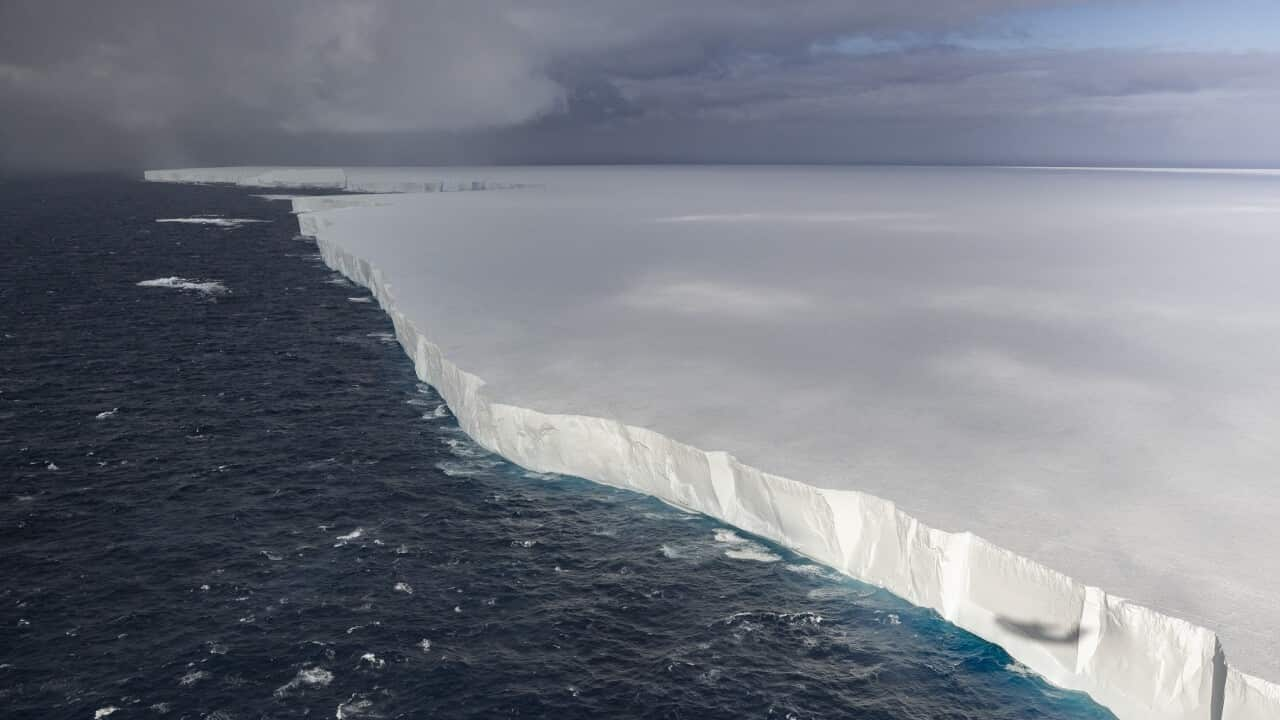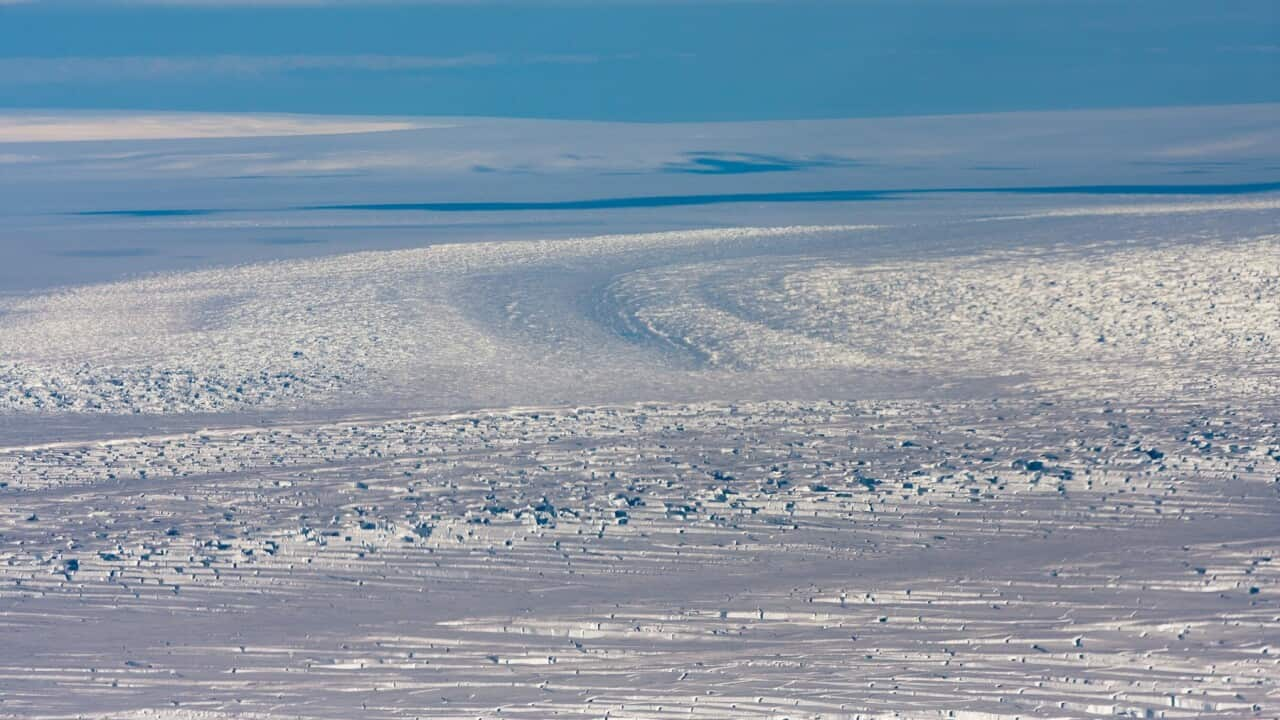TRANSCRIPT
Spanning 3,500 square kilometres, the A-23-A iceberg, also known as 'megaberg' is the world's largest.
That's roughly the size of the ACT.
It's 40 metres tall and weighs an estimated one trillion tonnes, but what makes it remarkable, experts say, is how long it has survived.
The iceberg first broke away from the Antarctic shelf in 1986, eventually drifting into shallow waters.
Dr Sue Cook is a glaciologist at the University of Tasmania.
She says with about 90 per cent of the ice sitting underwater, the iceberg got stuck on the sea floor.
"So like a ship with a really deep keel, if it gets into shallow waters, it can run aground on the ocean bed. And that happened with this iceberg for more than 30 years. So it sat kind of grounded on the coast in an area with really low air temperatures, really low ocean temperatures, and that protected it and helped it to survive longer."
In 2020, the iceberg broke free and it's been travelling north ever since.
The journey delayed at times by ocean forces that kept the iceberg spinning in place for months at a time.
But experts say it now appears to be drifting towards South Georgia Island, often referred to as the "Galapagos of the South" because of its rich abundance of wildlife.
The iceberg could reach the island within weeks, though it's possible it may bypass it, explains Dr Petra Heil - a sea ice scientist at the Australian Antarctic Division.
She says if it is headed for the island, the iceberg will likely split before it reaches the shore, scientists say.
"It's highly unlikely that a complete iceberg, the a23A will run aground on the island. It's more likely that the iceberg itself will ground near shore in shallow waters. And due to the stress of this grounding process, the iceberg is possibly breaking up in smaller fragments."
But she says these smaller pieces could still put wildlife under threat blocking access to crucial feeding grounds.
"They conceivably have the potential to block actual pathways of certain colonies or other nesting ground of penguins, seals, and other animals, especially those animals that rely on getting access to the sea for feeding."
Icebergs are natural phenomena, and they can be good for the planet releasing nutrients into the ocean that are key to supporting marine life.
However, scientists say the rate at which they are being lost from Antarctica is increasing, likely due climate change.













